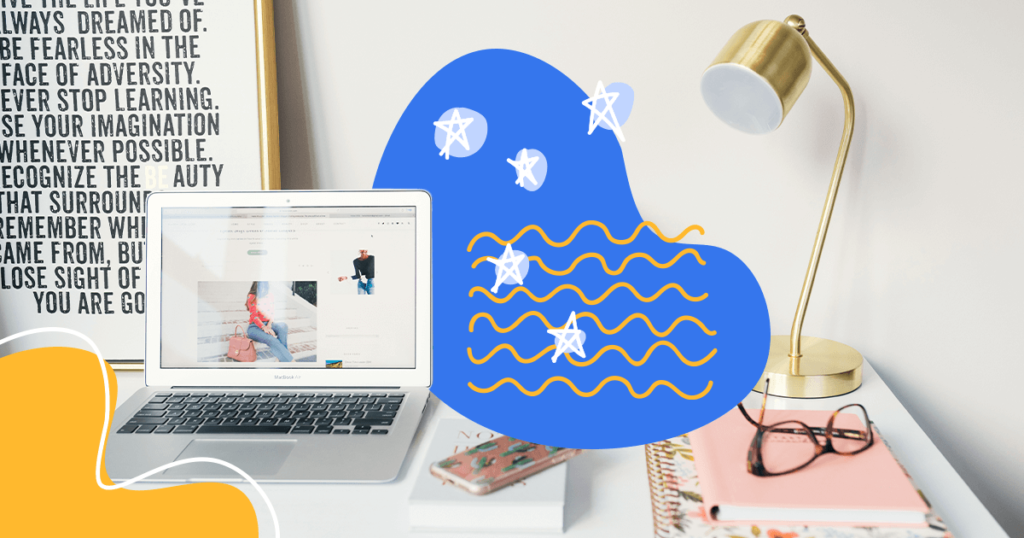Adding images to your website, blog post, article, or social media post provides advantages to both you and your readers.
These advantages include a better user experience, traffic gains, and possibly even more high-quality leads to nurture.
Your images can also serve you in another way, including improving accessibility and aiding in your SEO and how you rank.
How can that happen? By adding beneficial alt text to those images.
Alt text provides you with a way to describe visual elements online, optimize your content, and increase your organic traffic — all good reasons for including it in your SEO strategy.
Keep reading to learn more about how to write good alt text.
What is Alt Text?
Alt text, or alternative text, is a carefully crafted set of words that describes the appearance, context, and/or function of an image on a webpage or other online platform.
Essentially, it serves as a tool for screen reading tools to describe the image to those who are in some way visually impaired or blind and cannot see the image itself.
The screen reader reads the alt text aloud, providing the listener with meaning and context as to how that particular image relates to the rest of the content on the page.
Your alt text will also appear whenever the image fails to load on a viewer’s screen. This loading issue may occur due to a lack of internet connection, low bandwidth, or if the viewer has chosen to block images.
These images may be photos, illustrations, graphs, charts, drawings, or screengrabs and are an essential part of your content marketing strategy.
In more technical terms, alt text is an HTML attribute and looks something like this: <img alt=”text alternative.”>
Why is Alt Text So Important?
Including alt text with your images is important for three specific reasons listed below.
Accessibility
When alt text is well written, it can improve website and content accessibility.
Why is this important? Not all visitors to your website will be able to clearly see your images.
These include those who are visually impaired or blind and rely on screen readers or other assistive devices.
Visitors who have voluntarily turned off image loading in order to save data will still see how the image contributed to the page’s content.
In other instances, your image will simply fail to load, and the alt text will appear in its place, ensuring the visitor receives the information that the image would have provided if it had loaded correctly.
Visitor Experience
When someone visits your website, and the images fail to load quickly or not at all, possibly due to low bandwidth, the alt text will appear, informing them of what the image is and how it relates to the content overall.
With this, they don’t feel like they are missing out on something important, and this betters the user experience.
Optimization
Finally, by optimizing your image alt text, you create an enhanced experience for prospective customers by better matching them with what they are searching for instead of wasting their time.
In other words, alt text is important to your overall SEO strategy.
How Does Alt Text Impact SEO Results?
Alt text serves as invisible or hidden text that describes an image positioned on a website.
It’s also another way to impact your SEO results.
With well-crafted alt text for your images, you provide search engines with better information to help index and rank your content.
Search crawlers leverage alt text to help them better interpret your image, index it appropriately, and position you in search engine result rankings.
This interpretation occurs due to the ability of Google to use the alt text along with the page contents and its algorithms to develop an understanding of the image’s subject matter.
In addition, with this added text, Google can gain a better understanding of the image and your webpage as a whole, raising your chances of appearing higher up in image search results.
This is a double win for your strategy.
Your content will not only show up on search engine results pages but also in image search results for your long-tail keyword, providing a second avenue for consumers to reach your page.
You can also use alt text on platforms other than your website.
Options to add your own optimized alt text to images can be found on WordPress, Facebook, Twitter, LinkedIn, Instagram, and various marketing and public relations platforms.
The 10 Best Tips on How to Write Good Alt Text
When it comes to writing alt text, it’s essential you make it the best it can be to achieve positive results. To help you with this, below are 10 best tips on how to write good alt text.
1. Be Specific in the Description
Be specific and concise when it comes to writing an alt text.
Consider the image itself and also the content of the webpage it is on.
If the content surrounding the image presents information on what to do if you find injured wildlife, include alt text such as “close up of an injured raccoon’s face.”
By doing so, you are providing visitors to your website a clear understanding of what the image is by using very few words.
Also, consider the function, or purpose, of the image and how to convey that concisely. In other words, what do you want your visitor to gain from the image?
2. Add Context
Add context that directly relates to the topic on your webpage.
If it is a generic image, tie it in with your page with the alt text.
For example, if the image is of a woman sitting at a desk sorting through papers, you might include an alt text similar to “woman searching for tax filing documents.”
How you word it will depend upon the webpage’s topic.
Your alt text is a combination of the image itself and the elements of the content surrounding it.
3. Keep your alt text short
Keep your alt text short but be sure to include enough to adequately describe the image and convey its purpose.
Longer descriptions full of flowery language and filler words can be distracting when using a screen-reader and can be confusing to search crawlers.
As you compose your alt text description, keep in mind that screen readers generally will cut it off at around 125 characters, so keep it concise and short.
Use a few words or a sentence, depending on the needs of the image.
4. Avoid using “image of…” or “picture of…”
The HTML code already identifies your image or picture as such, so avoid using these words and taking up space at the beginning of your alt text.
If the image does add context in some way, mention what type of image it is, such as a chart, graph, illustration, screengrab, headshot, or other.
5. Limit the use of keywords
If it makes sense, include a keyword or phrase in your image alt text to boost SEO. However, don’t overdo it.
You want to avoid keyword overload or stuffing as it can negatively affect your ranking.
Stay focused on how you can accurately and specifically describe the image, and if a keyword fits within that description, then use it.
The use of a keyword can alert your reader as to why that particular image is included and how it relates to the content itself.
6. Avoid copying the image caption
Image captions and alt text are two different elements, and both can add value.
Find a way to compose each one so that, together, they provide your reader with a more complete description of both the image and the reason it appears with the content.
7. Check for spelling mistakes
Misspelled words can affect the user experience, causing interruptions and confusion. They can also interfere with the crawling of your site by search engines.
8. Avoid including an alt text for decorative images
Some images are better left with no alt text included, such as purely decorative ones.
Decorative images are those used to visually break up the content on a page or make the page look nicer.
They contain no significant meaning or context relating to the page and are purely decorative.
Insert the word “null” in alt text fields if possible, so that screen readers will skip over them.
9. Use “longdesc=” when an image needs more of a description
In some instances, an image will need a longer description in order to effectively describe it and convey the context surrounding it.
In these cases, you can use the “longdesc=” attribute and provide a link to take the reader elsewhere for a full explanation.
10. Include alt text with button images
If your image is that of a button, included as a way for a viewer to submit or click for more information, you need to include an alt text that tells them the purpose of the button.
This alt text placement is particularly important for screen readers and when images fail to load.
Wrap Up: A Well-Written Alt Text Adds Value for Readers and Boosts SEO
Now that you know how to write good alt text, always consider adding it to help your readers.
Not only will the alt text provide a better user experience by appearing when the image fails to load, but those visually impaired can still know what the image represents while using a screen reader or other device.
Alt text can also serve as a beneficial part of your SEO strategy, helping search crawlers interpret and index its subject matter better, leading you to higher rankings.
Enhance Your Content with Writer Access Integrations!
Experience a new level of content creation with Writer Access. Seamlessly discover and edit images using our integrations for a more robust creative process.
Our users enjoy exclusive access to Storyblocks, a valuable repository of free stock photos, to add a visual flair to their content. Additionally, our Shutterstock integration streamlines the image-finding process, ensuring a hassle-free experience in sourcing high-quality visuals.
To empower your content creation journey, we also provide integration with Canva, a versatile design platform. This integration facilitates effortless image editing, allowing you to customize and refine visuals directly within the Writer Access platform.
Curious to explore more? Dive into a world of possibilities by signing up for our free trial today!



![[ROCK NA] [EBOOK SEO] Complete Guide](https://rockcontent.com/wp-content/uploads/2024/06/banner_Search-Engine-Optimization.png)






